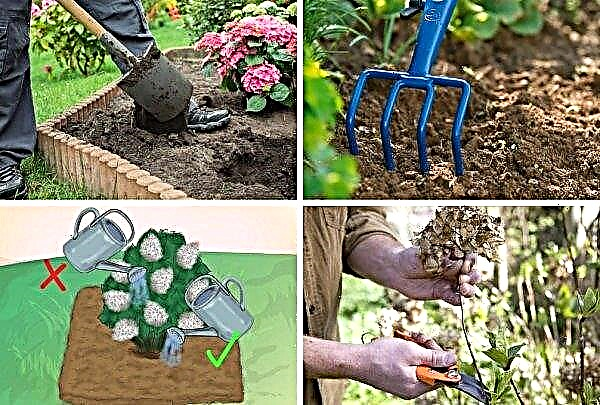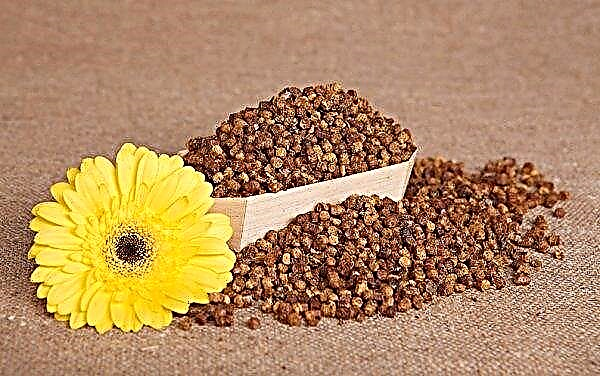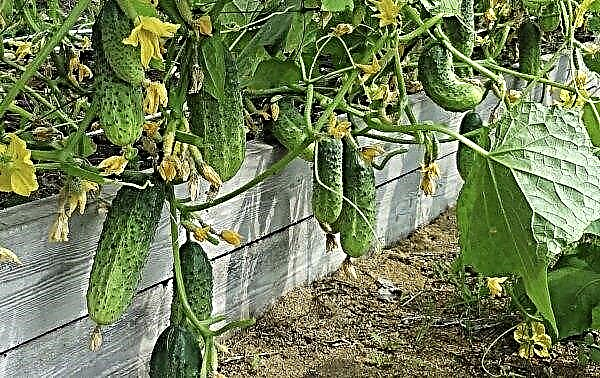The task of obtaining tasty tomatoes at first looks quite simple: plant seedlings, water, prevent blight, loosen, remove weeds and regularly harvest. But in practice, you may encounter some complications. The unexpected appearance of white spots on plants is one of those problems that are encountered when growing these crops.
Features of growing tomatoes
Tomatoes are quite demanding to care. And in order to avoid problems with them during the growing process, you need to think and take action at the initial stages.
Seeds before planting should:
- tested for germination;
- disinfected;
- fueled by organic and mineral substances;
- pass the hardening process;
- dry well.
Only then will it be possible to get good seedlings from them, for which competent care is also required:
- correct soil composition;
- watering;
- timely dive;
- hardening.
After receiving the seedlings, it should be properly planted in the prepared soil, taking into account the characteristics of each variety:
- tie up;
- to water;
- to loosen the earth;
- remove weeds;
- fertilize;
- treat with means to combat diseases and pests of tomatoes.
 Tomatoes should receive enough light, heat, moisture. But even doing everything right and on time, sometimes it is not possible to avoid the appearance of problematic issues. Indeed, any almost imperceptible violation of at least one of the factors of the harmonious development of plants affects their condition and is gradually exacerbated.
Tomatoes should receive enough light, heat, moisture. But even doing everything right and on time, sometimes it is not possible to avoid the appearance of problematic issues. Indeed, any almost imperceptible violation of at least one of the factors of the harmonious development of plants affects their condition and is gradually exacerbated.Why do white spots appear on tomatoes and what should I do?
White spots on tomato bushes are one of those negative consequences that should be troubling. After all, they can be provoked by various reasons, and the appearance of such spots is not always harmless and easily fixable, which is why beginning gardeners sometimes give up in the struggle for their plants. By correctly and timely setting the provoking factor, you can understand that this is not the worst problem and its spread can be stopped by resuming the healthy state of the plants.
Important! The sun's rays help produce ascorbic acid and chlorophyll in tomatoes, which improve the process of plant adaptation and their strengthening.
Sunburn
The sun for tomatoes is the most important factor in their harmonious development, growth, appearance and ripening of fruits. But with irresponsible and ill-conceived care, sunlight for tomatoes can be a problem. The most harmless and quite easily eliminated reason for the appearance of white spots on the leaves of tomatoes is a sunburn. Characteristic symptoms:
Characteristic symptoms:
- manifestation of minor whitish spots;
- gradually the leaves dry;
- the process of twisting takes place;
- in case of untimely elimination of the cause, the tomato can dry completely.
This condition of tomato bushes can be caused by exposure to direct sunlight on the plant. Most often this happens in hot weather.
This effect becomes detrimental if:
- weak and gradually unprepared plants were brought to the sun;
- plants grow in absolutely open space in the conditions of the scorching sun;
- watering in the hot period is carried out from above on the sheets.
Important! White spots from burns can appear not only due to direct sunlight, but also in the greenhouse when the heat is unbearable for plants.
To be able to resume the healthy state of tomatoes, you must:
- when the smallest manifestations of white spots appear, remove the plants from the sun;
- plants growing in open space, try to pritenit;
- watering is carried out under the root;
- treat the affected areas with special anti-stress drugs "Epin", "Zircon", succinic acid to increase the resistance of plants to negative environmental effects, to strengthen them;
- in greenhouses organize ventilation and fresh air access, and if possible - remove the film coating.
Video: treatment of tomato seedlings from sunburn
Septoria
"White spotting" is the popular name for such a fungal disease as septoria. This is another provoking factor in the appearance of white spots on tomatoes.
Did you know? Initially, tomatoes were afraid to eat, considering them poisonous and inedible.
Symptoms of its manifestation:
- the appearance of white spots that have a brownish tint;
- mainly such spots manifest themselves on the bottom of the sheets;
- the stain spreads quickly enough to the entire sheet, it dries, falls off;
- stems and fruits are further affected.
The causes of septoria are:
- pathogen spores;
- hot weather with high humidity;
- soil and the remains of vegetation left in the garden from last year, infected with a fungus.
Important! The fungus pathogen Septoria can tolerate winter, hiding in the ground and plants.
If there are problems with Septoria, the following steps should be taken:
- noticeably affected by the fungus leaves, parts of plants or all diseased plants are removed from the garden to prevent the defeat of healthy plants;
- further all bushes are to be treated with Fitosporin;
- after collecting all the fruits and the end of the season, all plants from the garden must be removed, and the earth must be dug up for the winter.

Powdery mildew
White spots also appear as a result of damage to tomato bushes with powdery mildew.
This is evidenced by the following symptoms:
- on the sheets, first of all, on their lower part white spots with a gray tint with a white coating resembling flour appear;
- yellowish spots become visible below the leaves;
- as the fungus ripens, the spots acquire a darker shade, moisturize and cover all the leaves;
- later flowers, ovaries, fruits are affected;
- the leaves begin to dry;
- There is a process of dying off the leaves.
Did you know? Tomatoes in botanical science - berries.
The causes of powdery mildew:
- infection of plants with marsupial fungus;
- a sharp increase in humidity;
- increased air temperature;
- growing tomatoes in greenhouse conditions with condensation.

To combat powdery mildew should:
- burn affected tomatoes;
- plants on which the disease did not appear externally, treated with antibacterial drugs "Trichodermina", "Gaulsina."
Mosaic
White spots on tomatoes pose a particular threat if they are caused by a fungal disease such as a mosaic.
When infected with a mosaic of tomatoes, the following symptoms become noticeable:
- small multi-colored spots, among which a significant part are white;
- stretching and curling of the leaves begins;
- stems and leaves of plants dry;
- neighboring bushes are affected quickly enough;
- on the fruits, light greenish and white lesions become noticeable;
- the flesh of tomatoes undergoes blackening and decay;
- significantly reduced productivity.
Important! It does not make sense to resist a mosaic in a severe form. Fruits affected by these diseases can not be eaten.
The causes of the mosaic include:
- Tomato mosaic tobamovirus virus;
- contaminated soil, growing potatoes in the neighborhood, cucumbers;
- the transmission of the virus by ticks, aphids, bugs;
- infected seeds intended for growing seedlings;
- high air temperature;
- dampness, increased humidity;
- excess nitrogen in fertilizers;
- bad light.

With the treatment of the mosaic when the first alarming symptoms occur, you can not delay.
Treatment of this disease takes place in several stages:
- affected bushes need to be isolated rather than from healthy plants;
- it is necessary to cut infected areas to a healthy area, treating the section with a solution of potassium permanganate, hydrogen peroxide, chlorhexidine;
- at the initial stage of the disease, treatment with a special agent is effective - karbofos;
- with the first signs noticed in time, milk with the addition of iodine can help;
- at the initial stage of the disease, plants should be treated with fungicides "Maxim", "Lamador";
- when the disease moves to a more serious stage, it is necessary to remove the tomatoes from the garden and burn.
Video: mosaic of tomatoes
Late blight
A serious problem for every gardener who has decided to grow tomatoes is late blight, a disease also characterized by the appearance of light whitish and brownish spots.
The initial stage of the disease passes almost imperceptibly, but the disease has certain symptoms:
- spots on the leaves become white, grayish, brownish;
- the spread of spots is quite fast;
- with a high level of humidity, a whitish fluffy coating is determined from below the diseased leaves and on the stems;
- the fruits are covered with dark shapeless spots that merge with each other and gradually cover the entire surface of the fruit;
- the fruits become shapeless, curved, covered with a brownish crust;
- the process of softening and complete decay of the fruits begins, they begin to produce a putrid odor;
- on green fruits harvested without signs of illness, the disease may appear later during ripening if they were infected with fungal spores.
Important! In dry sunny weather late blight does not occur.
Causes of late blight:
- phytophthora spores;
- affected potato growing near tomatoes;
- soil contaminated with late blight spores;
- prolonged rainy weather, fogs;
- a significant decrease in night temperature, contributing to the formation of dew.

Other reasons
There are also other reasons provoking the appearance of white spots on tomato bushes.
These include:
- cladosporiosis, which has symptoms characteristic of most viral diseases of tomatoes;
- lack of trace elements, especially boron;
- excessive watering at low air temperatures, swelling of the leaves;
- low humidity;
- sharp changes in temperature conditions;
- genetic characteristics of individual hybrids;
- deficiency in the soil of magnesium, molybdenum, zinc;
- excess in the soil of potassium, sodium, as a result of increased fertilizer by organic matter;
- illiterate chemical processing of tomatoes;
- greenhouse conditions for keeping tomatoes.
Important! To distinguish the appearance of spots from a burn and from an infectious disease, you need to carefully examine the plants, analyze the conditions of their cultivation and all the features of care.
Preventive measures
In order to prevent the appearance of white spots on plants as a result of sunburn, one should:
- do not initially place seedlings in the sun, starting with a three-hour stay of tomatoes in the fresh air in the morning and evening;
- gradually increase the time spent by the seedlings in the fresh air, using curtains when direct sunlight appears;
- start for a short time to leave it in the sun;
- Before planting seedlings in the soil, keep it for about 7 days under a tree or in another shaded place;
- Do not water plants planted in permanent soil so that drops fall on the leaves;
- choose a place for planting seedlings so that it is not open all day for the rays of the sun;
- in greenhouses conditions should be created for ventilation.

From septoria:
- remove all plants from the garden after the end of the season, because infection can remain on their tops;
- dig the soil before wintering;
- regularly inspect tomatoes for white spots, especially in hot and humid weather, destroying affected plants on time.
Powdery Mildew:
- during prolonged rains or constant fogs spray with Tsineba solution;
- plants affected by the fungus should be burned;
- in greenhouses provide comfortable conditions for tomatoes by airing them.
From the mosaic:
- seed treatment with potassium permanganate solution before sowing;
- the soil mixture intended for sowing seeds must be calcined in the oven at a temperature of +80 ... + 90 ° С;
- before planting seedlings in open soil, it is necessary to dig it up and water it with a weak solution of boric acid and potassium permanganate;
- when planting seedlings, it is necessary to observe an optimal distance between bushes of at least 40 cm and plant them away from potatoes and cucumbers;
- if a disease occurs, replace the upper earth layer;
- a couple of weeks after transplanting seedlings in open soil or in a greenhouse, it must be treated with a solution of copper sulfate or Bordeaux liquid, it must be reprocessed after 14 days;
- it is necessary to monitor the sterility of the garden tool;
- carry out timely weed removal;
- treat insect tomatoes from insecticides.

From late blight:
- not allow significant density of planting bushes;
- mulch the soil with rotted hay;
- carry out the removal of the lower leaves on the bush;
- do watering plants under the root;
- monitor the weather forecast, and when the rainfall is approaching, treat the tomatoes with fungicides;
- after transplanting seedlings, it is recommended to spray it with whey;
- Do not plant tomatoes in a soil with a high nitrogen content;
- plant tomato varieties resistant to late blight in your garden or greenhouse;
- ventilate greenhouses;
- apply phosphorus and potassium fertilizers to the soil.
If you take into account all the features and rules of growing tomatoes in open ground and a greenhouse, try to comply with them, then we can agree that there is nothing complicated in growing these crops. The main thing is to remember that disease prevention is always easier, simpler and cheaper than the process of treatment. And this, first of all, concerns the appearance of white spots on the sheets of tomatoes.












